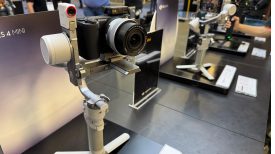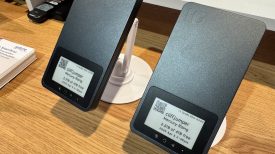
You may not be overly familiar with Cinedeck, but back in 2010 they released the Cinedeck Extreme, one of the first ever external recorder/monitors. The Extreme could record uncompressed 4:4:4 or 4:2:2 HD, Apple ProRes, Avid DNxHD, and CineForm Digital Intermediate files in MOV format via HDMI and single/dual link HD-SDI. At the time it was quite revolutionary, but in the years that followed competing companies quickly came with a lot more affordable and smaller options. Cinedeck eventually switched their focus and started to make mobile, studio orientated products to be used in digital cinema productions environments.
Cinedeck has just recently announced the RX2, a more powerful and lower priced replacement to their long-standing RX3G two channel HD/SD recording and playback platform. Like its RX3G predecessor, the RX2 can be controlled independently. So you can record on one channel while playing back on the other. The channels can be set at different framerates and codecs. RX2 comes with all common codecs including ProRes, DNxHD, AVC-Intra, H.264, XDCAM HD, DV25, D-10 and others, for simultaneous master and proxy recording utilizing a selection of file wrappers including, MOV, MXF OpAtom, MXF Op1A and more. Like all Cinedeck recorders, RX2 also supports standard off-the-shelf SSDs, eliminating the high cost of the proprietary disks used by other systems.

RX2 differentiates itself from the previous 2-channel systems by including a PCIe slot for 8/10/16Gb networking. This provides direct network recording and playback, which speeds up some production-to-post workflows. RX2 utilizes a powerful CPU to allow more processing headroom when working in 50/60P and when encoding with challenging codecs such as AVC-Intra. The RX2 has a retail price almost 40% lower than RX3G. With advanced deck control, each channel of RX2 can be controlled just like a tapedeck over RS422. You can use each channel of RX2 as an independent deck, while controlling each channel separately using your preferred NLE, 3rd party output device, or even a tapedeck.
The RX2 comes standard with a built-in touch display for controlling the system and monitoring video and audio signals. The system provides 3G-SDI BNC connections, AES audio connections, external reference, external timecode, per-channel RS-422 and a number of data ports for USB, eSATA and monitor connectivity. All the front and rear connections are positioned with protection, accessibility and flexibility in mind.
The RX2 will be available towards the end of this year for $11,995 US. It is a pity that the system can’t do any 4K or UHD recording, and there are cheaper products such as the Atomos Shogun Studio, that have similar functionality for a lot less money.





